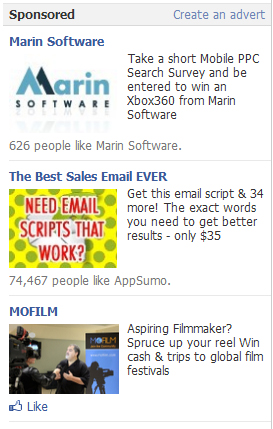Marketers have been flocking to Facebook ever since the social network began its global expansion almost six years ago. With around 800 million ‘active’ users alongside reams of data on their favourite TV shows, music, brands, who they socialise with and where they spend their time; it’s easy to see the lure.
Inevitably the debate has rumbled on about just how much value brands get from pouring their precious budgets into getting as many ‘likes’ as possible. How does this translate into the potential to purchase? How much are these fans worth? These questions continue to puzzle and perplex the industry.
Social advertising is easier to decipher. The latest figures from TBG Digital show advertising rates on the website have gone up 40%. However, with click-through rates down 8%, the feeling that marketers are paying for the concept of the Facebook audience rather than reality is difficult to shake.
So is it really worth the money that advertisers and brands are so quick to throw at it?
The first thing to say about Facebook advertising is that it’s flexible. Advertisers can adjust the number of ads, frequency and alter advertising budget at will as the campaign progresses. It also offers control, with the ability to input the keywords that you want to target, demographically or geographically. You can then use these ads to help build a community around your brand and really engage your target consumer in a fun and friendly manner.
Furthermore, compared to other forms of marketing it’s still relatively cheap. Despite the recent price hike, you still only pay on a cost-per-click basis. This means that you’ll only see the really price sky rocket if your ad is achieving the results you’re after. If you’re looking to bolster the number of Facebook fans that your brand has then you can do much worse then look at the site’s ad offering. It’s easy to use your creative to link a brand through to the website.
Despite all this, the purpose of Facebook for users is to communicate and share content with each other. Advertising that intentionally tries to direct users to brand sites and is measured in terms of conversion to sales, cuts against the context the users are in. Advertising which inspires users to share content and stimulate conversation is more likely to build the value that brands are after. This requires a balance of activity and not one simply measured by immediate conversion. Users have always been very protective over their social media activity and have become accustomed to the ad-free environment that was established. Over interruptive marketing, no matter how targeted and relevant will ultimately turn off these users.
This has put Facebook in a tricky position where it has to retain its appeal to users. In a bid to appease the masses social networks have naturally placed their ads out of the way on the right hand side of the page where they are unlikely to rile users. The beauty of Facebook is its inclusive nature; everyone and anyone can place an ad provided they can pay. While this maximises their revenue streams, it ultimately comes at a cost in terms of quality. The clutter that exists in the space means brands get lost amongst a myriad of weird and wonderful companies.
Finally, just like the user profiles there isn’t a great deal of flexibility in how you advertise. This means making an ad that stands out difficult, and achieving cut-through nigh-on impossible. It also leaves the website open to the potential problem of ‘banner blindness’, as users become more accustomed to the presence of ads on Facebook so they become more adept at filtering them out. The straitjacket of Facebook ad layouts is only likely to heighten this phenomenon.
Ultimately, Facebook ads offer a viable solution but if brands think that diverting funds from the traditional into social networks is a recipe for success then they’re destined to be hunting the results they hope to achieve for a long time. Like any other channel, its use needs to be judged against the same standards that other mediums are subject to. Only then will it be possible to ascertain whether you are getting the value you’d like from your ad.






